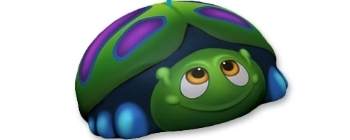How Playgrounds Are Responding to Technology
When thinking of a playground, we no longer have one uniform image of a sandy area that features a slide, a set of monkey bars, a swing set to the side and perhaps a teeter tauter. Today's playgrounds have moved past the basics and introduce children to imaginative worlds, fitness activities, natural elements, inclusive play, and in some instances- even water activities. Playgrounds are becoming more stimulating and engaging than before, and in this article, we've highlighted the various types of playgrounds that you can expect to see popping up in your area - if they aren't already there.
Themed Playgrounds
Instead of having a series of isolated structures, playgrounds have slowly transformed into themed play areas where children can spend the day ruling a castle, aboard a pirate ship, or on a fossil digging adventure. The large space is dedicated to providing children with a holistic learning space where they can play out their imagination while remaining active.
Fitness Structures
As the government increases health and body initiatives, it's not surprising that playgrounds are adapting to encourage children to meet their recommended physical activity needs. In our article Can a Playground Promote Fitness for Children and Adults? we discussed the rising trend of playgrounds incorporating fitness equipment such as steppers, presses, and jump bars.
S-Shaped Jump Bar by Greenfields Outdoor Fitness
While a young child isn't expected to use a piece of equipment such as a butterfly press unsupervised, having a blend of equipment will encourage children of all ages to participate.
Increased Sensory Equipment & Inclusivity
A traditional playground poses challenges with socialization, communication and imagination for children with Autism or Sensory Processing Disorders. That is why playground manufacturers have developed new equipment that allows for sensory play. Children of all abilities can enjoy sensory play as it encourages exploration and discovery.
If you're interested in learning more about inclusive playspaces and how to design one, check out our article Creating an Inclusive Playspace which outlines equipment to include as well as factors to consider.
Heading back to nature
While brightly coloured playgrounds continue to prevail, we can expect to see an increase this year in playgrounds that are inspired by nature. This means more playgrounds that incorporate equipment directly from nature such as rocks, shrubs, sand, logs, and trees, or play equipment that mimics nature.
With a natural playground, a child's imagination is stimulated as they also learn to appreciate nature and their environment. Activities such as jumping over wooden logs, climbing on rocks, crawling under structures, building sandcastles, digging in the sand, and constructing materials out of sticks, rocks, or stones are going to rise with natural playground environments.
The skills that a natural playground provides are similar to all other playgrounds. Children are testing their physical fitness and strength, as well as their ability to balance and be coordinated.
Splash/Spray Pads
Interactive water play areas such as Splash Pads have been increasing in popularity over the past couple of years. This is because they not only allow a safe way to cool down and exercise, but also provide a rich sensory experiencing for children.
A typical Splash Pad features nozzles that spray water at the user from the ground, above, or at each other for a limited time. Other features such as sprinklers or showers are also commonly found in kid-friendly designs such as the ones shown above. Having a variety of different water accessories encourages children to explore the physics of water as they can interact with the varying pressures.
While Splash Pads are highly popular in urban areas due to limited access to waterfronts and higher temperatures, there has been a growth of them in rural areas as well. This is because they are self sufficient systems that recycle the water used during play, and because there is minimal risk of drowning. So there is no need for lifeguards, and parents can relax while letting their child safely explore and splash the water.
With increased screen time among children, we're noticing that now more than ever, playgrounds are challenging the digital era for attention. Playground designers are incorporating themed play, water play, and fitness equipment into the playscape as a way to encourage more interaction with others and their environment. We can expect playgrounds to continue to evolve into a more interactive experience for children with self guided play and increased inclusiveness - two things screen time tends to leave out.





















